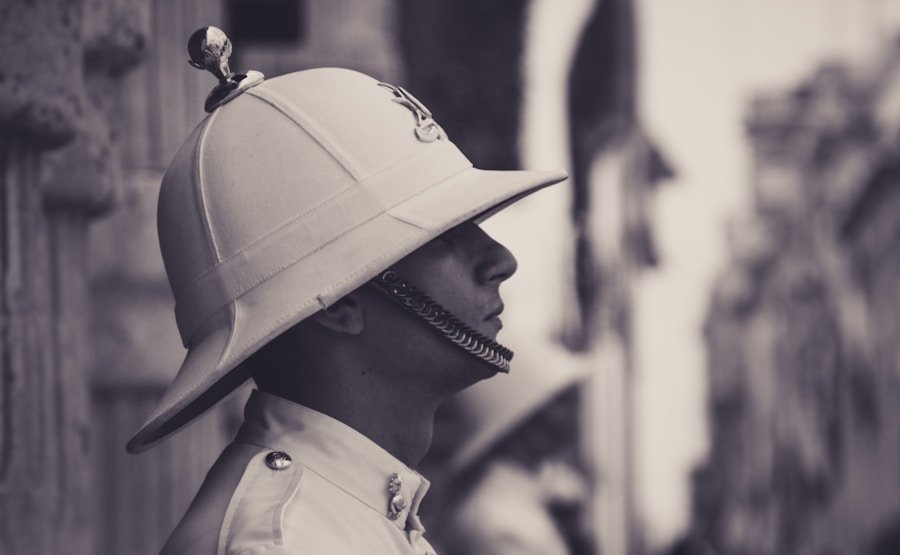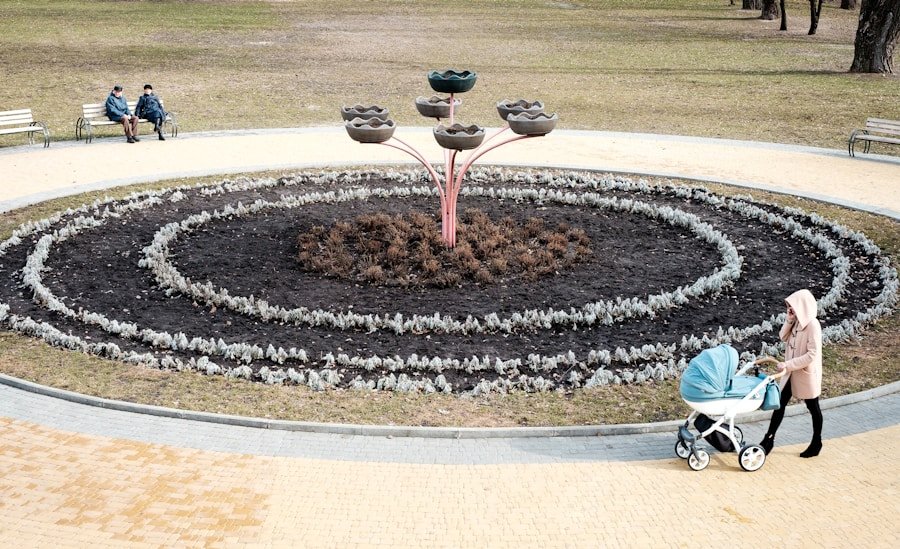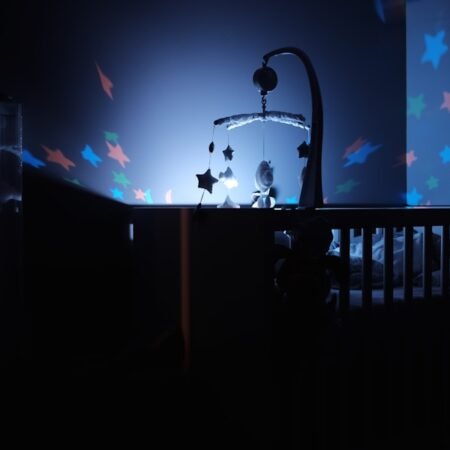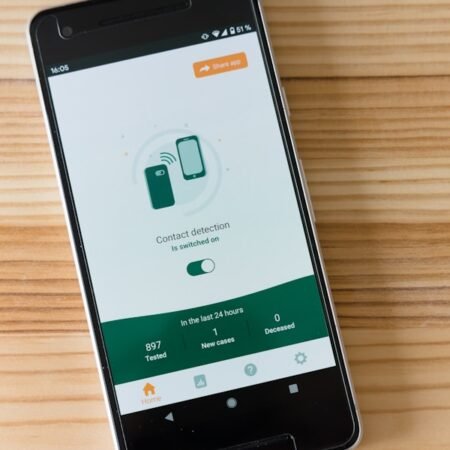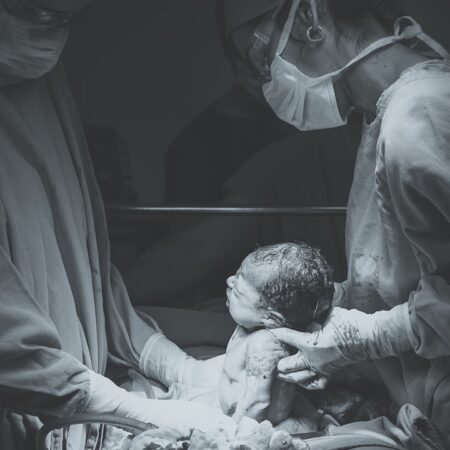Peace of Mind: How a Thorough Baby Proofing Checklist Can Keep Your Child Safe
As a parent, the safety and well-being of your baby is your top priority. One of the most important steps you can take to ensure their safety is baby proofing your home. Baby proofing involves identifying and addressing potential hazards in your home to create a safe environment for your little one to explore and grow. By taking the time to baby proof, you can have peace of mind knowing that your baby is protected from common household dangers.
The benefits of peace of mind cannot be overstated. When you have peace of mind, you are able to relax and enjoy your time with your baby without constantly worrying about their safety. It allows you to focus on bonding with your child and creating a nurturing environment for them to thrive. By baby proofing your home, you can create a safe space where your baby can explore and learn without the risk of accidents or injuries.
Understanding the Risks: Common Household Hazards for Babies
Before you can effectively baby proof your home, it’s important to understand the common household hazards that pose a risk to babies. Some of the most common hazards include:
1. Electrical outlets: Babies are naturally curious and love to explore their surroundings. Electrical outlets pose a significant risk as they can easily insert their fingers or objects into the outlets, leading to electric shock or burns.
2. Stairs: Falling down stairs is a major concern for babies who are just learning to crawl or walk. Even a short fall can result in serious injuries, so it’s important to install safety gates at the top and bottom of staircases.
3. Sharp edges: Furniture with sharp edges, such as coffee tables or countertops, can pose a risk to babies who are learning to walk or crawl. They can easily bump into these edges and injure themselves.
4. Choking hazards: Babies have a tendency to put everything in their mouths, so it’s important to remove small objects that could pose a choking hazard. This includes items such as coins, small toys, and buttons.
By understanding these common hazards, you can take the necessary steps to address them and create a safe environment for your baby.
Creating a Plan: How to Develop a Comprehensive Baby Proofing Checklist
Developing a comprehensive baby proofing checklist is essential to ensure that you address all potential hazards in your home. Here are some steps to help you create a plan:
1. Conduct a thorough assessment: Start by walking through each room in your home and identifying potential hazards. Take note of any sharp edges, electrical outlets, or other dangers that need to be addressed.
2. Prioritize the hazards: Once you have identified the potential hazards, prioritize them based on the level of risk they pose to your baby. This will help you focus on addressing the most urgent dangers first.
3. Research baby proofing products: Look for baby proofing products that can help address the hazards you have identified. This may include outlet covers, safety gates, corner guards, and cabinet locks.
4. Install safety measures: Once you have gathered the necessary baby proofing products, install them according to the manufacturer’s instructions. Make sure to test each safety measure to ensure they are secure and functioning properly.
By following these steps, you can develop a comprehensive baby proofing checklist that will help keep your baby safe.
Room by Room: Tips for Baby Proofing Every Area of Your Home
Baby proofing should be done in every room of your home to ensure your baby’s safety. Here are some tips for baby proofing each area:
1. Nursery:
– Anchor furniture such as dressers and bookshelves to the wall to prevent tipping.
– Use cordless window coverings or keep cords out of reach.
– Keep small objects such as toys or accessories out of the crib to prevent choking hazards.
2. Kitchen:
– Install stove knob covers to prevent your baby from accidentally turning on the burners.
– Use cabinet locks to keep cleaning supplies and other hazardous materials out of reach.
– Keep sharp objects such as knives and scissors stored in locked drawers or high cabinets.
3. Living room:
– Use corner guards on furniture with sharp edges.
– Secure heavy furniture such as TV stands or bookshelves to the wall to prevent tipping.
– Keep small objects, such as remote controls or small toys, out of reach.
4. Bathroom:
– Install toilet locks to prevent your baby from accessing the toilet bowl.
– Keep medications and cleaning products stored in locked cabinets.
– Use non-slip mats in the bathtub to prevent slips and falls.
By implementing these tips, you can create a safe environment for your baby in every room of your home.
Safety Essentials: Must-Have Products and Tools for Baby Proofing
When it comes to baby proofing, there are certain products and tools that are essential for ensuring your baby’s safety. Here are some must-have items:
1. Outlet covers: These covers are designed to prevent your baby from inserting their fingers or objects into electrical outlets, reducing the risk of electric shock or burns.
2. Safety gates: Safety gates are essential for blocking off staircases or other areas of your home that pose a falling hazard for your baby. Look for gates that are sturdy and easy to install.
3. Corner guards: These guards are designed to cushion sharp edges on furniture, reducing the risk of injuries if your baby bumps into them.
4. Cabinet locks: Cabinet locks are important for keeping hazardous materials such as cleaning supplies or medications out of reach of your baby.
In addition to these products, there are also essential tools that can help with baby proofing, such as a drill for installing safety gates or anchors for securing furniture to the wall. By having these items on hand, you can effectively baby proof your home.
Outside the Home: Protecting Your Baby in Public Spaces and Other Environments
Baby proofing is not limited to your home. It’s important to also protect your baby in public spaces and other environments. Here are some tips for doing so:
1. Public spaces:
– Use a stroller with a five-point harness to secure your baby while out and about.
– Avoid placing your baby on high surfaces such as tables or countertops.
– Be mindful of potential hazards such as sharp edges or open electrical outlets.
2. Other environments:
– When visiting friends or family, ask them to baby proof their home or bring your own baby proofing supplies.
– When staying in a hotel, request a crib or playpen that meets safety standards.
– Be vigilant in unfamiliar environments and keep a close eye on your baby at all times.
By taking these precautions, you can help protect your baby no matter where you are.
Electrical Safety: Preventing Accidents and Injuries with Electrical Devices
Electrical safety is a crucial aspect of baby proofing, as electrical devices can pose serious risks to babies. Here are some electrical safety tips:
1. Use outlet covers: Install outlet covers on all electrical outlets to prevent your baby from accessing them. Make sure the covers are securely in place and cannot be easily removed by your baby.
2. Secure cords: Keep electrical cords out of reach of your baby by using cord organizers or hiding them behind furniture. This will prevent your baby from pulling on cords and potentially causing accidents.
3. Unplug unused devices: When not in use, unplug electrical devices such as hair dryers, curling irons, or toasters to eliminate the risk of your baby accidentally turning them on or getting tangled in cords.
4. Use surge protectors: Plug electrical devices into surge protectors to prevent electrical surges that could potentially cause fires or damage to the devices.
By following these electrical safety tips, you can reduce the risk of accidents and injuries involving electrical devices.
Furniture and Decor: How to Secure and Anchor Items to Keep Your Baby Safe
Furniture and decor can pose a risk to babies if not properly secured. Here are some tips for keeping your baby safe around furniture and decor:
1. Anchor furniture: Use furniture anchors or wall straps to secure heavy furniture such as dressers, bookshelves, or TV stands to the wall. This will prevent them from tipping over if your baby tries to climb on them.
2. Secure cords: Keep cords from blinds or curtains out of reach by using cord cleats or winding them up and securing them with cord clips. This will prevent your baby from getting tangled in cords.
3. Avoid hanging heavy objects: Avoid hanging heavy objects such as mirrors or picture frames above your baby’s crib or changing table. If they were to fall, they could cause serious injuries.
4. Use non-toxic paint: If you plan on painting your baby’s room or any furniture, make sure to use non-toxic paint that is safe for babies. This will prevent your baby from ingesting harmful chemicals.
By taking these precautions, you can create a safe environment for your baby around furniture and decor.
Emergency Preparedness: What to Do in Case of an Accident or Injury
Even with the best baby proofing measures in place, accidents can still happen. It’s important to be prepared and know what to do in case of an accident or injury. Here are some steps to follow:
1. Stay calm: It’s natural to panic in an emergency situation, but it’s important to stay calm and focused. This will allow you to think clearly and take appropriate action.
2. Assess the situation: Assess the severity of the injury and determine if immediate medical attention is needed. If the injury is serious or life-threatening, call emergency services right away.
3. Administer first aid: If the injury is minor, administer basic first aid such as cleaning wounds, applying bandages, or using ice packs to reduce swelling.
4. Seek medical attention: If you are unsure about the severity of the injury or if your baby is showing signs of distress, it’s always best to seek medical attention to ensure their well-being.
By being prepared and knowing what to do in case of an accident or injury, you can respond quickly and effectively to keep your baby safe.
Keeping Up with Changes: How to Update Your Baby Proofing Checklist as Your Child Grows
As your child grows and develops new skills, it’s important to update your baby proofing checklist to address new risks. Here are some tips for keeping up with changes:
1. Regularly reassess your home: Set aside time every few months to reassess your home for potential hazards. Look for new risks that may have emerged as your baby has grown and address them accordingly.
2. Stay informed: Stay up to date on the latest safety guidelines and recommendations for baby proofing. This will ensure that you are aware of any new risks or safety measures that need to be implemented.
3. Adjust safety measures: As your baby becomes more mobile and curious, you may need to adjust your safety measures accordingly. For example, you may need to install additional safety gates or remove small objects from their reach.
By regularly updating your baby proofing checklist, you can continue to provide a safe environment for your growing child.
The Benefits of Peace of Mind for You and Your Baby
In conclusion, baby proofing is an essential step in ensuring the safety and well-being of your baby. By identifying and addressing potential hazards in your home, you can create a safe environment where your baby can explore and grow without the risk of accidents or injuries. The benefits of peace of mind cannot be overstated. When you have peace of mind, you are able to relax and enjoy your time with your baby, knowing that they are protected. This allows you to focus on bonding with your child and creating a nurturing environment for them to thrive. By following the tips and guidelines outlined in this article, you can effectively baby proof your home and experience the benefits of peace of mind for both you and your baby.










